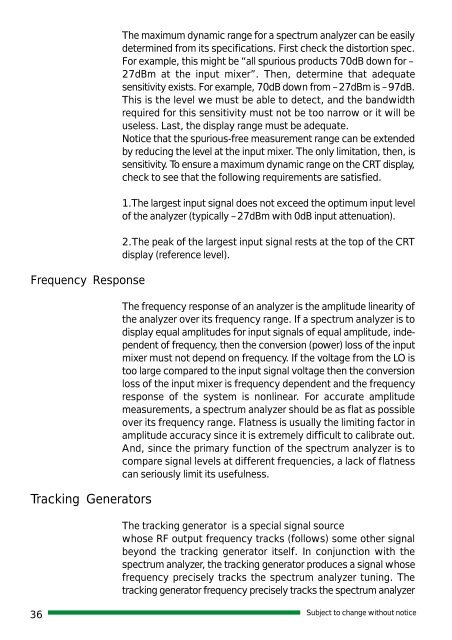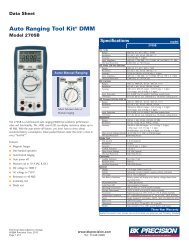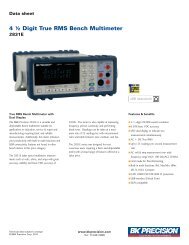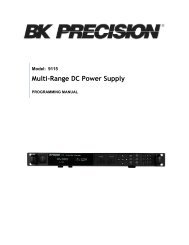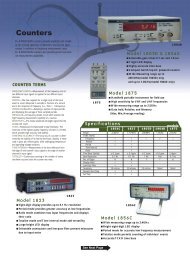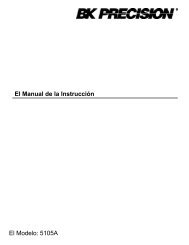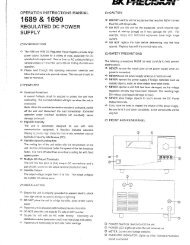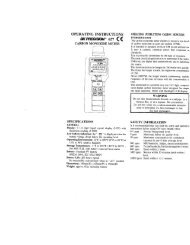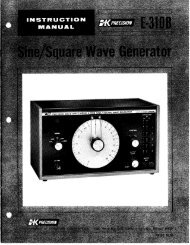2635 manual - BK Precision
2635 manual - BK Precision
2635 manual - BK Precision
Create successful ePaper yourself
Turn your PDF publications into a flip-book with our unique Google optimized e-Paper software.
Frequency Response<br />
Tracking Generators<br />
The maximum dynamic range for a spectrum analyzer can be easily<br />
determined from its specifications. First check the distortion spec.<br />
For example, this might be “all spurious products 70dB down for –<br />
27dBm at the input mixer”. Then, determine that adequate<br />
sensitivity exists. For example, 70dB down from –27dBm is –97dB.<br />
This is the level we must be able to detect, and the bandwidth<br />
required for this sensitivity must not be too narrow or it will be<br />
useless. Last, the display range must be adequate.<br />
Notice that the spurious-free measurement range can be extended<br />
by reducing the level at the input mixer. The only limitation, then, is<br />
sensitivity. To ensure a maximum dynamic range on the CRT display,<br />
check to see that the following requirements are satisfied.<br />
1.The largest input signal does not exceed the optimum input level<br />
of the analyzer (typically –27dBm with 0dB input attenuation).<br />
2.The peak of the largest input signal rests at the top of the CRT<br />
display (reference level).<br />
The frequency response of an analyzer is the amplitude linearity of<br />
the analyzer over its frequency range. If a spectrum analyzer is to<br />
display equal amplitudes for input signals of equal amplitude, independent<br />
of frequency, then the conversion (power) loss of the input<br />
mixer must not depend on frequency. If the voltage from the LO is<br />
too large compared to the input signal voltage then the conversion<br />
loss of the input mixer is frequency dependent and the frequency<br />
response of the system is nonlinear. For accurate amplitude<br />
measurements, a spectrum analyzer should be as flat as possible<br />
over its frequency range. Flatness is usually the limiting factor in<br />
amplitude accuracy since it is extremely difficult to calibrate out.<br />
And, since the primary function of the spectrum analyzer is to<br />
compare signal levels at different frequencies, a lack of flatness<br />
can seriously limit its usefulness.<br />
The tracking generator is a special signal source<br />
whose RF output frequency tracks (follows) some other signal<br />
beyond the tracking generator itself. In conjunction with the<br />
spectrum analyzer, the tracking generator produces a signal whose<br />
frequency precisely tracks the spectrum analyzer tuning. The<br />
tracking generator frequency precisely tracks the spectrum analyzer<br />
36 Subject to change without notice


